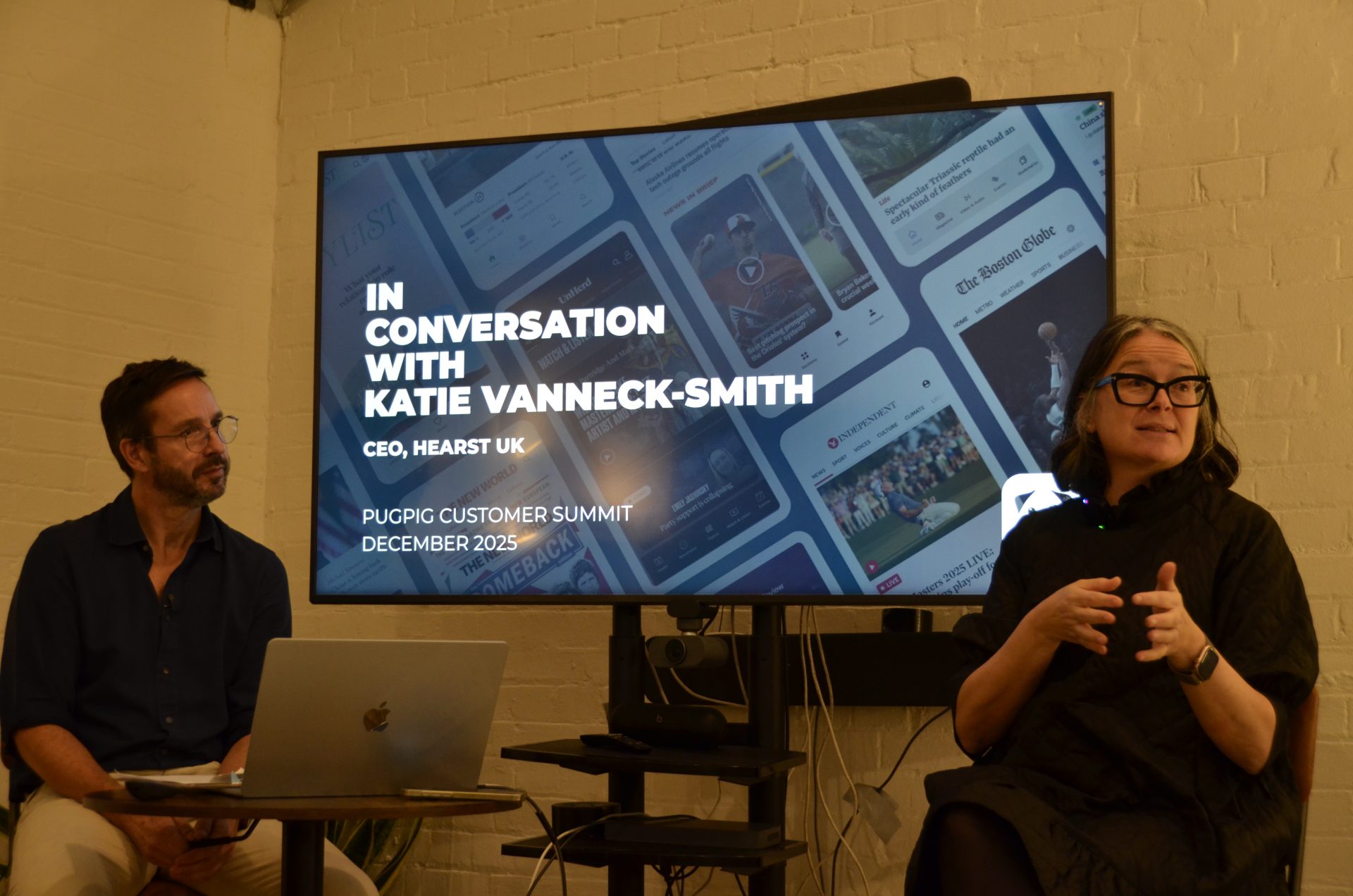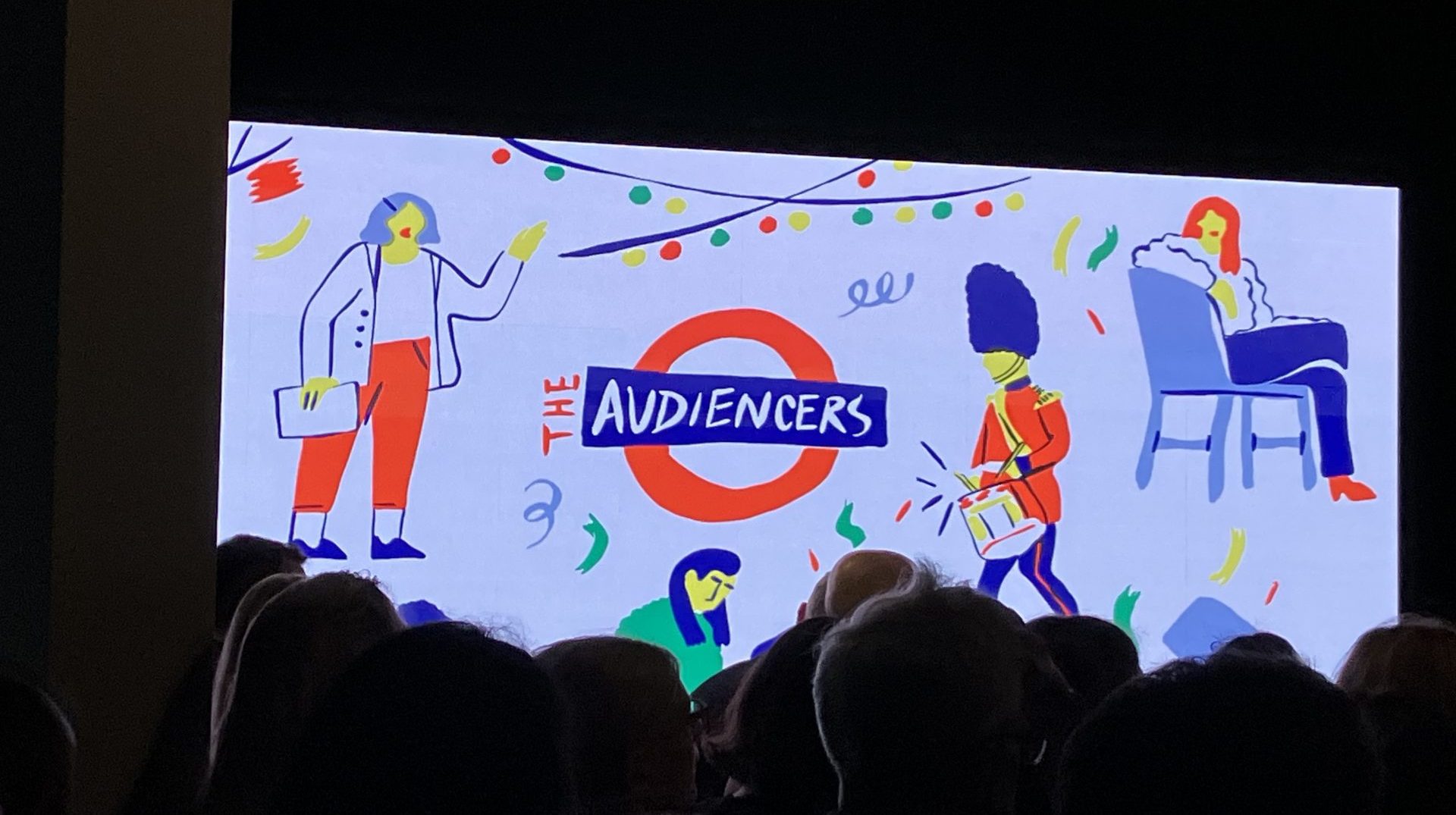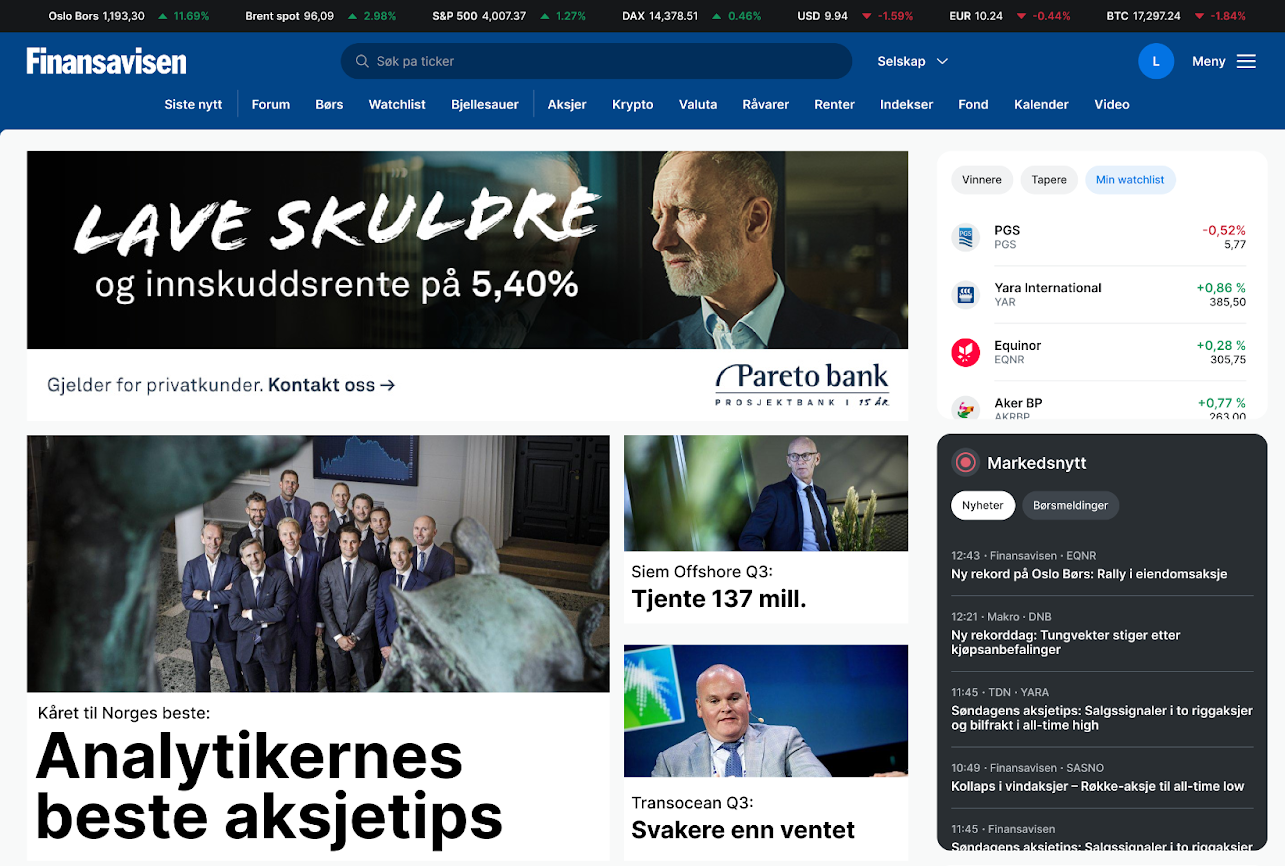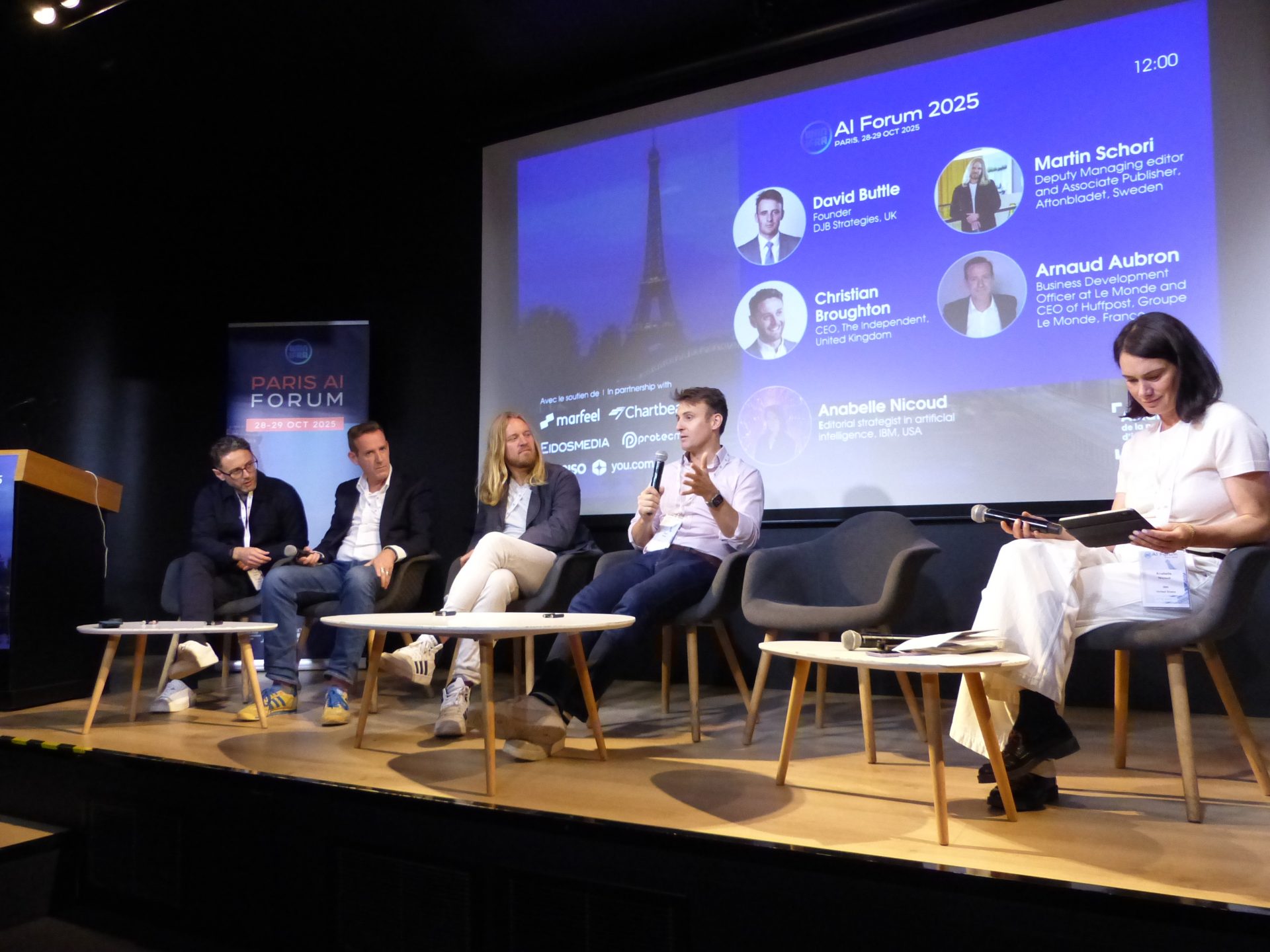
Newsletter
Newsletter
We summarise simple experiments and changes to your registration and subscription user journeys that can boost your results.
20th October 2023

In the Pugpig weekly media bulletin, Pugpig’s consulting services director Kevin Anderson and digital growth consultant James Kember distill some of the best strategies and tactics that are driving growth in audiences, revenue and innovation at media businesses around the world.
At Pugpig Consulting, we’re helping a lot of our customers test and optimise different parts of their app engagement and conversion stack whether that is:
If you want to know more about how we are working with publishers like you, get in touch at info@pugpig.com.
We felt in good company during the recent Audiencers’ Festival in London as the team at membership and subscription suite Poool hosted more than 130 media professionals to talk about many of our favourite subjects here at the Media Bulletin: the importance of known users and optimising for engagement and conversion. And we’ll share just a few of the actionable bits of insight that were shared on the stage.
The day once again proved the value of registration and how important it is as a first step in building a relationship with your audience. “Free members are 13 times more likely to subscribe than anonymous users,” Emmanuel Alix, CDO of L’Equipe, a French sports newspaper.
But Poool makes an important point: It’s best to start the journey to know a user with small steps. “When collecting data, start small to go big – collect less data and use it well before asking for more.”
While it is a step in the subscription conversion process, registration shouldn’t be thought of as an afterthought. Poool says that publishers need to develop registration “like you would any premium product”.
Smart publishers also are developing onboarding processes for newly registered users just as they do for subscribers. As we found out in the research for our Retention Economics report, publishers like Crain Communications in the US are developing dual-track onboarding processes that will automatically transition registered users who convert from the registration onboarding process into the subscription journey.
Of course, one of the standouts when it comes to registration is the Independent, and its chief data and marketing officer Jo Holdaway talked about the Indy’s journey in building a huge store of first-party data through registration.
In April 2021, they started to build out their well-known A2K – anonymous to known -strategy and increased their monthly registrations by 10x, going from 20,000 a month to 200,000. They now have roughly 5.3 m registered users.
That gives them a wealth of data to increase their advertising yields, but their data-driven approach also informs their premium content strategy so that they know what content to put behind their paywall. “We know what content drives propensity to subscribe,” she said.
And in a common theme throughout the day, having that data has made content commissioning more efficient. Like the FT and DC Thomson, the Independent has implemented a quality reads strategy, which maps content across traffic and engagement. That helps them make better decisions about what content to commission to attract new users and satisfy registered users and subscribers. “Our output has gone down, but traffic to premium articles has gone up,” she added.
With each iteration of the strategy, they identify new challenges, and one that they are still trying to crack is those registered users who are engaged, who often reach their limit of free articles, but won’t buy a subscription.
While audiences in the UK are “realising that quality news is not free”, she said that this registered and highly engaged cohort is a sizeable addressable audience. They continue to test different tactics to try to convert more of these users to a subscription.
Testing and experiments are a key element of the North Star framework that has been adopted by many media companies. Poool recommends leveraging lifetime value as one of the primary metrics to guide experiments as long-term subscribers deliver the highest value for media businesses.
At the festival, Poool shared the profile of a likely subscriber from the Lenfest Institute. This research from 500 publications around the world found characteristics that increased a user’s propensity to subscribe, including:
The five-year-old research also found that following a publisher on social media increased the propensity to subscribe by 4-8x, but we wonder if that still holds true with the decline in referrals from social networks that we have seen over that time.
And another nugget from the day was how important newsletters are to subscription businesses. At The Telegraph, a newsletter subscriber is 50% more likely to still be a subscriber after 12 months, Maire Bonheim, the paper’s head of newsletters told the audience.
Experimentation is important in finding how to increase the pool of registered users and subscribers. Poool CEO Maxime Moné and Madeleine White, the editor-in-chief of The Audiencers, highlighted the experimentation done by Elle France, which has led to triple digit increases in click-through rates on some subscription CTAs and up to 40% increases in conversion.
It was refreshing to hear Madeleine describe paywall optimisation as balancing the engagement of the user with frustration for the user. It relates to Poool’s advice about registration, that you need to start with simple of the user and build from there to develop a relationship. This is why we framed retention as relationship management in our Retention Economics report. In real life, you rarely ask someone for the kind of personal details that some websites ask for on first contact.
For media companies, this balancing act means that you don’t ask for too much data the first time you show a registration form to a user, and for subscription conversion, you modify displaying the paywall based on engagement, traffic source, content and offer.
For engagement and traffic source experiments, you might not show a paywall offer to a social user on their first visit whereas direct traffic could be shown the offer earlier in their journey. It allows you to focus your social media efforts on building loyalty off-platform which leads to engagement on-platform.
For content experiments, it means promoting your premium content in your newsletters, your homepage and amongst related topics on .
And for offers, it means experimenting with trial offers in terms of duration and pricing.
At Elle France, Maxim and Madeleine first talked about the important step of increasing the visibility of the paywall. For most publishers, 46% of users never see their paywall. They offered up a checklist to highlight all of the places that paywalls can be displayed including:
Once you’ve improved the visibility of the paywall, then you can experiment with the paywall itself. Maxim and Madeleine went through a typical conversion process for a publisher. They looked at the fall off of each step from how many visitors viewed premium content, to how many visitors saw a paywall, to how many clicked on the paywall and then finally how many converted. If a publisher was able to optimise each step and see an improvement of 10%, it would leave to a 48% increase in conversion.
Experimentation doesn’t need to be complicated, in fact, we agree with Poool that the first step is to use data to prioritise easy wins and start with the simplest things to implement. Run A/B test, analyse and implement that improvements and then repeat.
Elle France had the following results:
It shows the power of experimentation, but Poool also highlighted how this is a continual process. Don’t forget about the repeat part of the process. Moreover, publishers have long battled “banner blindness”, the tendency of readers to filter out areas of your site where they expect ads, especially if those ads and design don’t change frequently. The same things happen with paywalls so it’s worth keeping them fresh so that users don’t simply tune them out.
Here are some of the most important headlines about the business of news and publishing as well as strategies and tactics in product management, analytics and audience engagement.

Newsletter

Newsletter

Newsletter

Newsletter

Newsletter